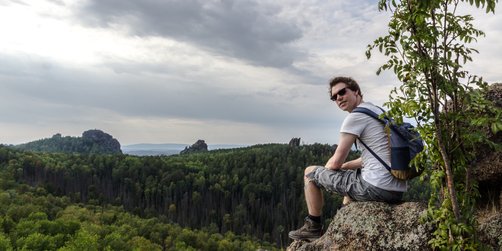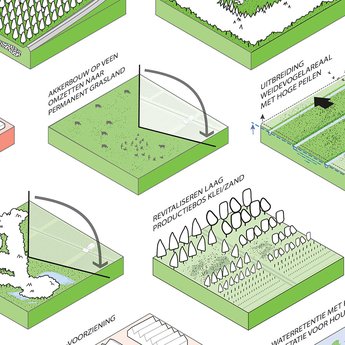As a landscape architect, Pim Kupers (1986) enjoys working on urgent societal challenges such as the energy transition, nitrogen crisis or CO2 sequestration. He also has a passion for technology and manufacturability, which makes ideas realistic. As a project leader, he gives space to partners and involves clients, but takes the stage when necessary. Pim works passionately towards the end result and is always open to share his knowledge through lectures, articles or a contribution to education.
Project leader, Landscape architect
Pim Kupers

Background
Pim Kupers studied landscape architecture at Wageningen University from 2004 to 2011. Part of his studies was an exchange at the Leibniz University of Hanover. His graduation focused on climate adaptation strategies for small low-lying islands, extremely vulnerable to sea level rise. Through workshops he has drawn up a 'resilient island plan' with the local population. After his studies he worked as a freelancer for a year, after which he was employed by IAA Architecten for five years. There he worked on city center plans, a solar highway and various care gardens. He also won the Eo Wijers Prize (2015) with a concept for the energy transition of business parks. Pim has been working at H+N+S Landscape Architects since November 2017.
Focus
URGENT CHALLENGES IN SOCIETY
In his ten years as a landscape architect, Pim has gained broad experience with urgent societal challenges. Both on the scale of the Netherlands – such as its contribution to the climate agreement in 2018 and 2019or its work for a study of nitrogen measures around Natura2000 areas – and on a smaller scale. For example, he worked on the energy transition for various provinces. He made a spatial framework for the RES for the province of Overijssel and developed energy building blocks for the province of Fryslân. He also wrote energy visions for various municipalities and worked on the integration of various solar parks, including a temporary solar park that contributes to nature development.
Pim also has extensive knowledge of CO2 storage in plants. For example, he worked on a study of how roadsides along infrastructure can retain more carbon with the development of extra vegetation and researched the spatial impact of CO2 sequestration in the landscape of the Netherlands for the purpose of the 'agriculture and land use' climate table.
TECHNOLOGY AND MANUFACTURE
Complex technical tasks challenge Pim. He knows how to communicate this easily and translate it into a high-quality landscape design. Because he immerses himself in the technology, he knows better than anyone where the (im)possibilities lie. He likes to apply this in infrastructure design. For example, he worked on the realization of the new provincial connection N69 between Veldhoven and Valkenswaard. In addition to being a content designer, he was also responsible for quality assurance within the project as Spatial Quality Manager. He also worked on the development of the ViA15 and the Antwerp ring road. Pim is currently working on the reinforcement of the historic estate dyke between Tiel and Waardenburg.
